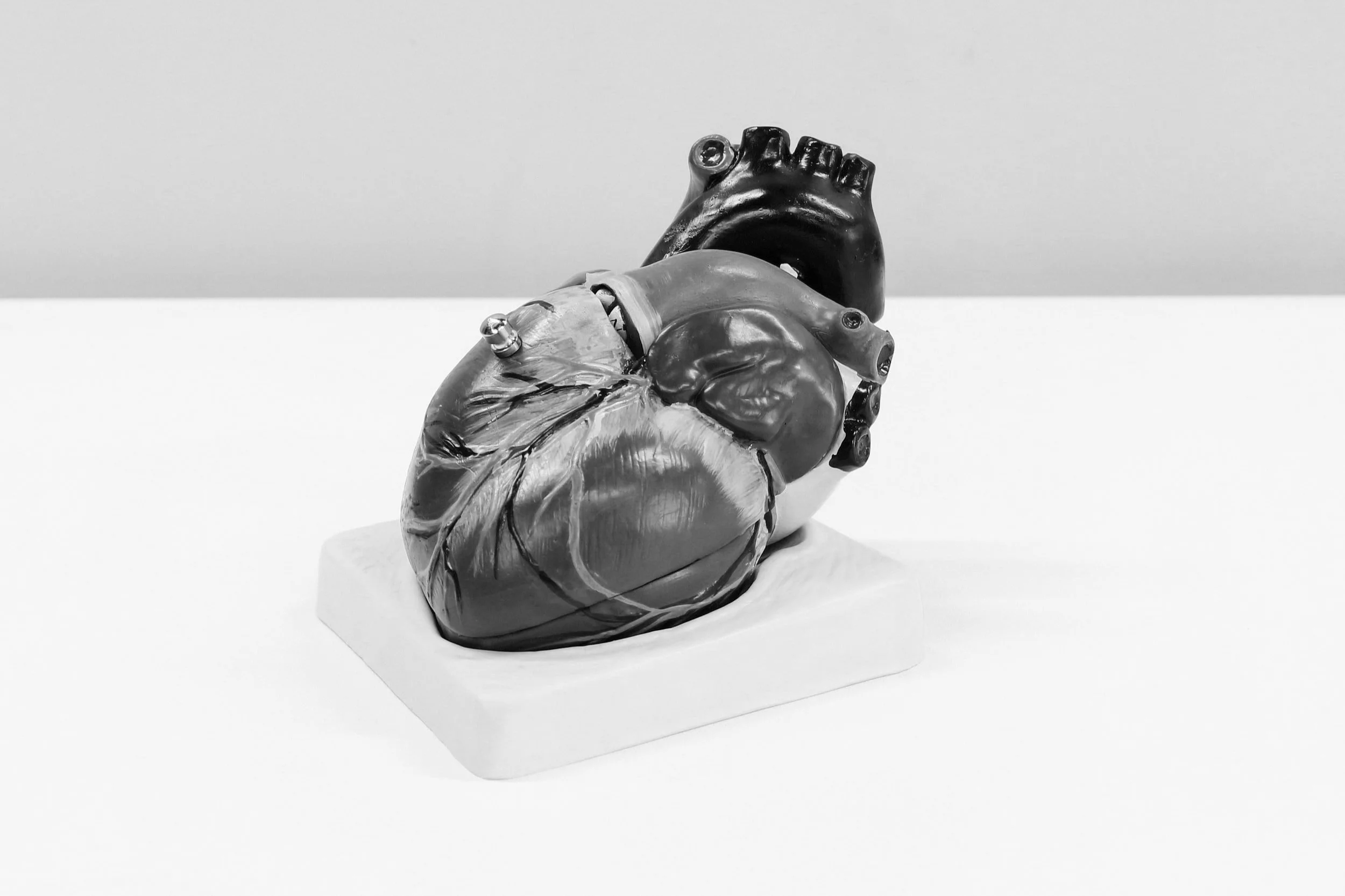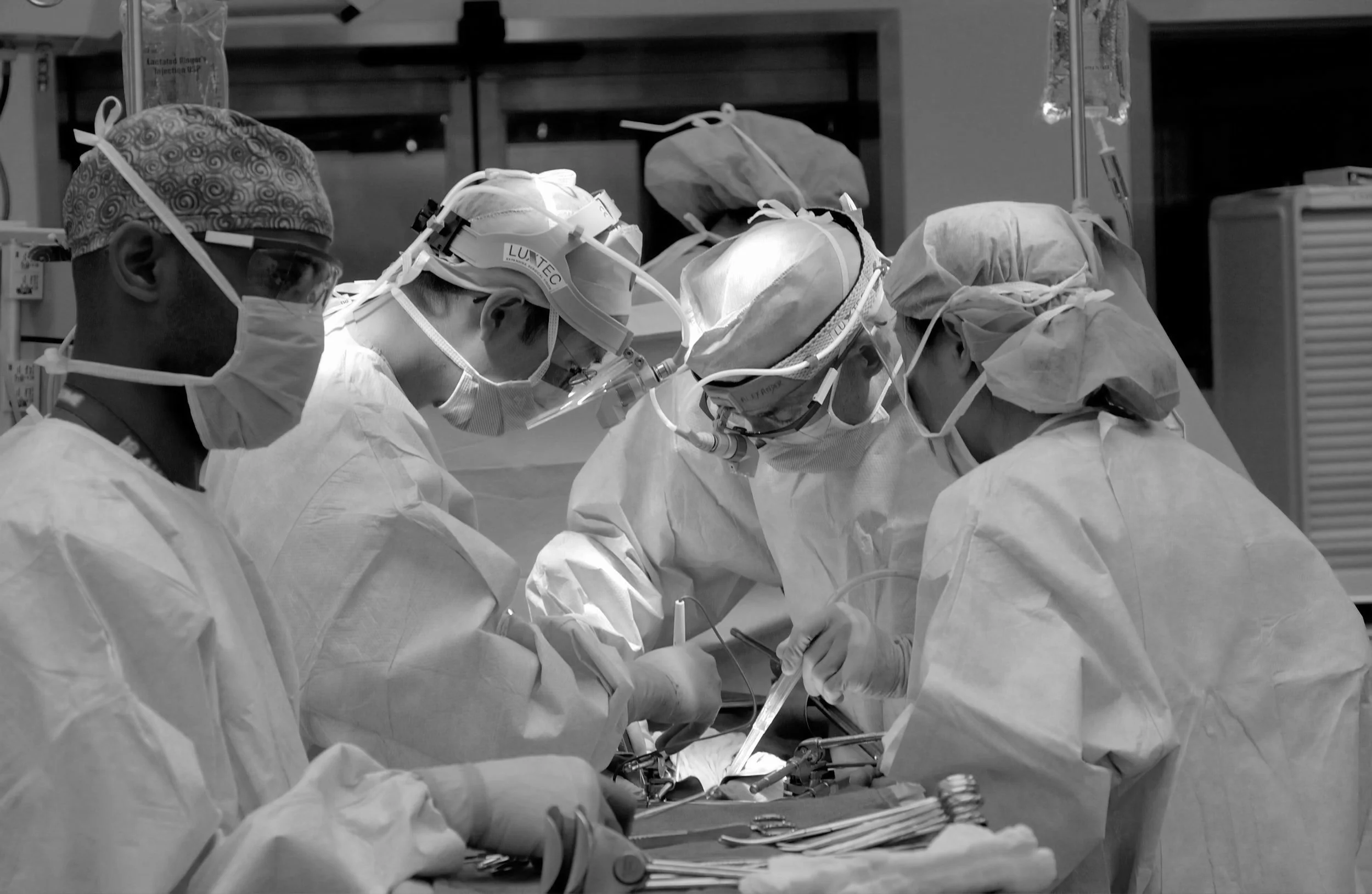Vol 27: A pebble in the wheel, part 2
Imagine having chest tightness so excruciating it feels as if there’s a 300-ton crane sitting on top of you, intermittently squeezing more and more deeply and crushing your sternum making it harder to breathe. In 2019, following four years of the most agonizing chest pain imaginable, my patient was wheeled into the operating theater for her third heart surgery. As she kissed (Jake) her husband of 13 years goodbye, and his hands slipped away, she thought about how they met 20 years ago at a friend’s birthday party. From then until now they’ve been best friends as well as husband and wife.
When she got closer to the theater and further away from her husband, who’d already suffered through the unimaginable loss of his mother and two sisters, she cried softly. As the tears fell, blanketing her cheek and pillow, she said a quick prayer, desperately hopeful that she’d soon be with him and their three daughters again.
The notable French Physician, Rene Laennec, invented the stethoscope over 200 years ago in 1816. Today, physicians all over the world continue to utilize this instrument to diagnose a multitude of heart ailments.
In 2015, at the age of 35, my patient began experiencing chest pain that quickly became progressively worse and more debilitating over the ensuing weeks. Initially she and her husband didn’t take it seriously. When she saw her physician for a routine check-up, she mentioned her symptoms and, using a stethoscope, he was able to discern a small heart murmur but initially he felt it was minor and simply wanted to observe it.
Following that, her next episode was so severe she fell to her knees. It left her completely exhausted and lightheaded so, barely able to walk, her husband took her to the hospital where tests were performed suggesting that she had a mitral valve prolapse. From there she was referred to a local heart specialist.
The cardiologist explained that her condition occurred when the two flaps in the mitral valve, located on the left side of the heart, don’t close properly. They then bulge into a separate chamber when the heart contracts forcing blood to leak out. Even though he didn’t think it was serious, the patient opted to get another opinion at a hospital in Jacksonville, Florida. While there, they also ran tests and didn’t consider her situation to be emergent but she suffered from another episode of chest pain. In response, she was given a shot of Benadryl in the emergency room but she had an immediate allergic reaction to it and the crash team had to expeditiously prevent her from going into anaphylactic shock.
Now that her doctors had witnessed for themselves the severity of the pain when it occurred, they opted to implant a stent, which initially worked well. For several months she didn’t have any symptoms but then without warning she began to experience shortness of breath, fatigue and chest pain, more intense than prior to her stent placement.
Given that she didn’t have insurance and the first surgery cost over thirty-five thousand dollars, she was very reluctant to undergo surgery once again. But the longer she waited, the worse her symptoms became so she eventually had another follow-up with her heart surgeon at which time he recommended open heart surgery.
The open-heart surgery was performed in 2018 and following that she was in a coma in the intensive care unit (ICU) for four days. Her husband prayed over her every day and chronicled her progress on his cell phone for her to see when she awoke. While his wife was in the ICU, he met a Bahamian nurse who worked there and she took especially great care of them both. My patient remained in the ICU for three weeks and in her own room on the surgical floor for another six weeks. She was then discharged but had to stay in a hotel for two weeks because she wasn’t allowed to travel given her high risk of developing blood clots. Before returning home to Nassau, right before Christmas, she had a final follow-up with her surgeon and he reluctantly gave her the green-light to fly. This was particularly important to her because she hadn’t seen her daughters for over three months.
Less than four months following her second surgery, however, her chest pain recurred. She and her husband were devastated given that at this point they’d been saddled with debts totaling over $100,000 in medical costs and she still wasn’t any better. During a particularly bad episode she became severely tachycardic, her heart beating so fast she couldn’t catch her breath. As her heart rate neared explosive levels, she was taken to the hospital and placed on a Morphine drip. Her team of doctors described to her that she was having an electric arrhythmic heart dysfunction. She was referred to yet another cardiologist who suggested performing a new cutting-edge procedure that would help to regulate the abnormal electrical impulses being fired every time her heart contracted.
In 2019, four years after she experienced the first severe chest pains and after a medical merry-go-round of diagnoses and two other heart surgeries, she was wheeled away from her husband to undergo this final procedure. Everything rested on its outcome.
From then until now, my patient has miraculously been symptom free and has returned to a normal life. The memories of everything she and Jake endured are still ever-present and they give thanks daily for what they’ve overcome. She shared that she was able to get through this ordeal with a considerable amount of prayer and the support of her family.
Jake specifically wanted to thank his father-in-law for his remarkable support. Having loved ones pray for him and his family was also deeply important to him and something he is infinitely grateful for. They both advocate getting health insurance and they hope that others can take from their story the importance of faith during times of struggle and having a support system that you can depend on.
A small pebble in the wheel of a horse-drawn carriage can simply be a nuisance but under certain circumstances it can also cause the wheel to dislodge and the entire carriage to collapse.
Recently Jake went to the beach, like he has so many Saturdays before, but this time he wasn’t alone. He had his wife and daughters by his side and he took a small pebble and threw it into the ocean. As it skipped along the calm turquoise surface and fell deeper and deeper into the abyss, he thought about everything that he and his family had endured. They returned home now fortified with the truth that the sun always shines after the rain and now they, never having lost the strength to smile, for the first time in a long time have become infinitely more excited for tomorrow.
This is The KDK Report.





